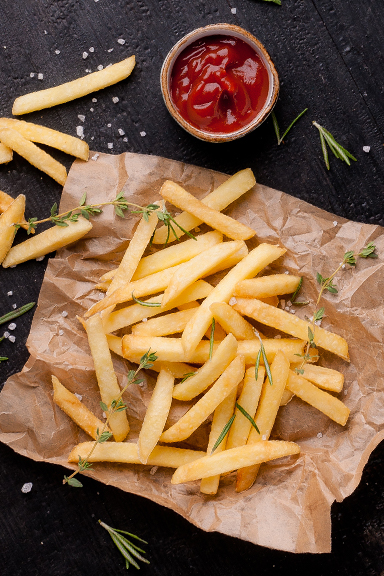How To Optimize a Digital Menu, Part 1: Labeling and Upselling

Digital menus have become critical to a restaurant’s success – 86% of diners browse menus before they dine out*. So it’s important to also ensure the menu is optimized to bring in as much profit as possible. Optimizing starts with understanding how to utilize psychology in your digital menu design. Your menu should make an impact in the mind of your diner by embodying the spirit of your brand, and bringing to mind the familiar experience of dining in. It should essentially act as a silent salesperson who can recognize what the diner wants, offer it to them and even recommend items they didn’t even know they wanted. This can be accomplished with simple approaches such as strategic labeling and upselling.
Strategic Labeling
When writing item descriptions for menus, you can influence diners’ selections by using adjectives that evoke a particular positive feeling or association, such as “Grandma’s Chicken Soup” or “Locally Sourced Root Vegetables.” These specific examples generate feelings of comfort and environmental responsibility, which captures diners’ attention and attracts them to your restaurant. This menu design tool is often referred to as “strategic labeling,” and it can have a significant effect on a customer’s dining decisions – especially when you’re working with your digital menu for online ordering.
As explained in the previous article in this series, one reason digital menus are so valuable is that they can be updated in real time, which plays an important role in applying strategic labeling. If restaurant operators can update menus on the fly, they are able to adjust menu labeling to synchronize with diner trends and seasonality.
Additionally, strategic labeling helps tell a story about a menu item – to make it more appealing than something a diner could find at any other restaurant. The deeper a menu goes into details, the more you can stand apart from your competitors, and even help support charging premiums for certain items, such as those containing organic produce or animal proteins raised without antibiotics. Below are a couple of easy recommendations for any restaurant to kickstart strategic labeling on their digital menu:
- Diner Trends: More and more consumers are actively seeking sustainability in what they eat – and would even pay more for it. Using key words like “vegan”, “gluten-free” or “organic” on your menu can help diners find the dishes that meet their needs. Make sure, however, to only use these terms when applicable.
- Seasonality: Seasonality can refer to both the literal seasons and events that happen seasonally. For example, if football is the hot ticket in town, try renaming some items/categories to encourage diners to order to-go for the big game. You can also use stories of seasonality to highlight your new specials. For instance, on New Year’s Day, make it fun and relatable. Mention New Year’s resolutions in your labeling, or describe items by making them out to be remedies that help with recuperating from a late night out on New Year’s Eve.
Suggestive Upselling
Since diners only spend an average of 109 seconds reading a restaurant menu**, many restaurant owners understand the need for restaurant staff training, and teaching servers to upsell whenever possible. Even though your servers can’t chat with a customer while they’re looking at your online menu, there are still powerful ways you can engineer your menu to upsell online. For example, adding a callout below your entrées with headers such as “Complete Your Meal” or “Pair It With” can help suggest tempting additions. These sections should only include a few diversified items (e.g. drinks, desserts, lower-priced appetizers) that are both profitable and popular, making this a great way for a menu to effectively act as a silent salesman – and predict what the customer wants before they even know themselves.
This is menu psychology at its finest. In addition, adding “Extras” or “Add-on” options (e.g. sauces, toppings) that incur an additional cost to items such as burgers, sandwiches, or pizza is an effective way to indicate that customers can customize dishes, using options they may not have thought of themselves. The more items a restaurant can sell in a given transaction, the more profitable that menu becomes. Customers are more inclined to include add-ons to their order with a simple click of a button than they are during an in-person transaction. It’s the “Would you like fries with that?” effect – but digital. This can reduce any hesitation a diner might normally have about listing all their preferences to a server. In fact, ticket size is about 20% higher online than over the phone or in store, due in part to add-ons and modifiers***.
Start influencing your customer purchasing behavior online by optimizing your digital menu now. Using a little bit of psychology and savvy design appeal can go a long way towards turning your virtual restaurant experience into actual, real-world profit.
About ChowNow:
ChowNow powers an online food ordering system as part of CHECKTM Business Tools. ChowNow allows customers to place orders directly from a restaurant's website, Facebook page, Instagram profile and custom-built mobile apps – commission-free. Learn more about ChowNow by visiting online ordering in CHECK Business Tools.
* OpenTable
** Gallup
*** Mobile Commerce Daily


